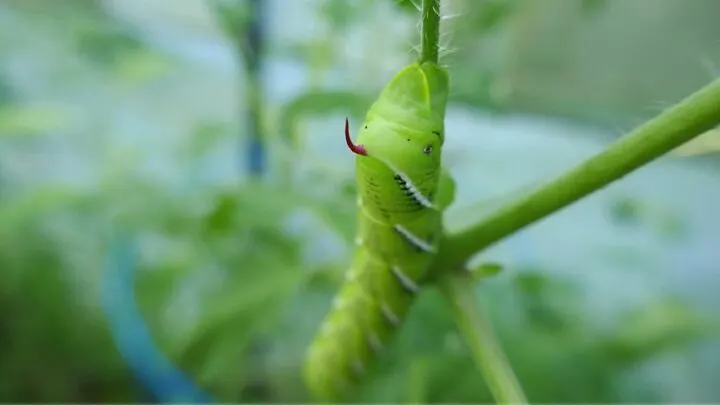What is eating my tomato plant stems? Tomatoes are easy to grow, making them a top choice for plants that home gardeners can grow. But the big problem is that pests love delicious plants and fruit. The damage is often easy to spot, but it is often unclear what pest caused it.
You won’t be able to enjoy your tomatoes if a pest is eating away at the plant. If something has been eating your tomato plant stems, immediately get to the bottom of the problem.
Table of Contents
What Is Eating My Tomato Plant Stems?
Cutworms, stem borers and click beetle larvae eat tomato plant stems. While rodents and birds will often try to eat tomatoes, cuts at the stems are usually caused by insects.
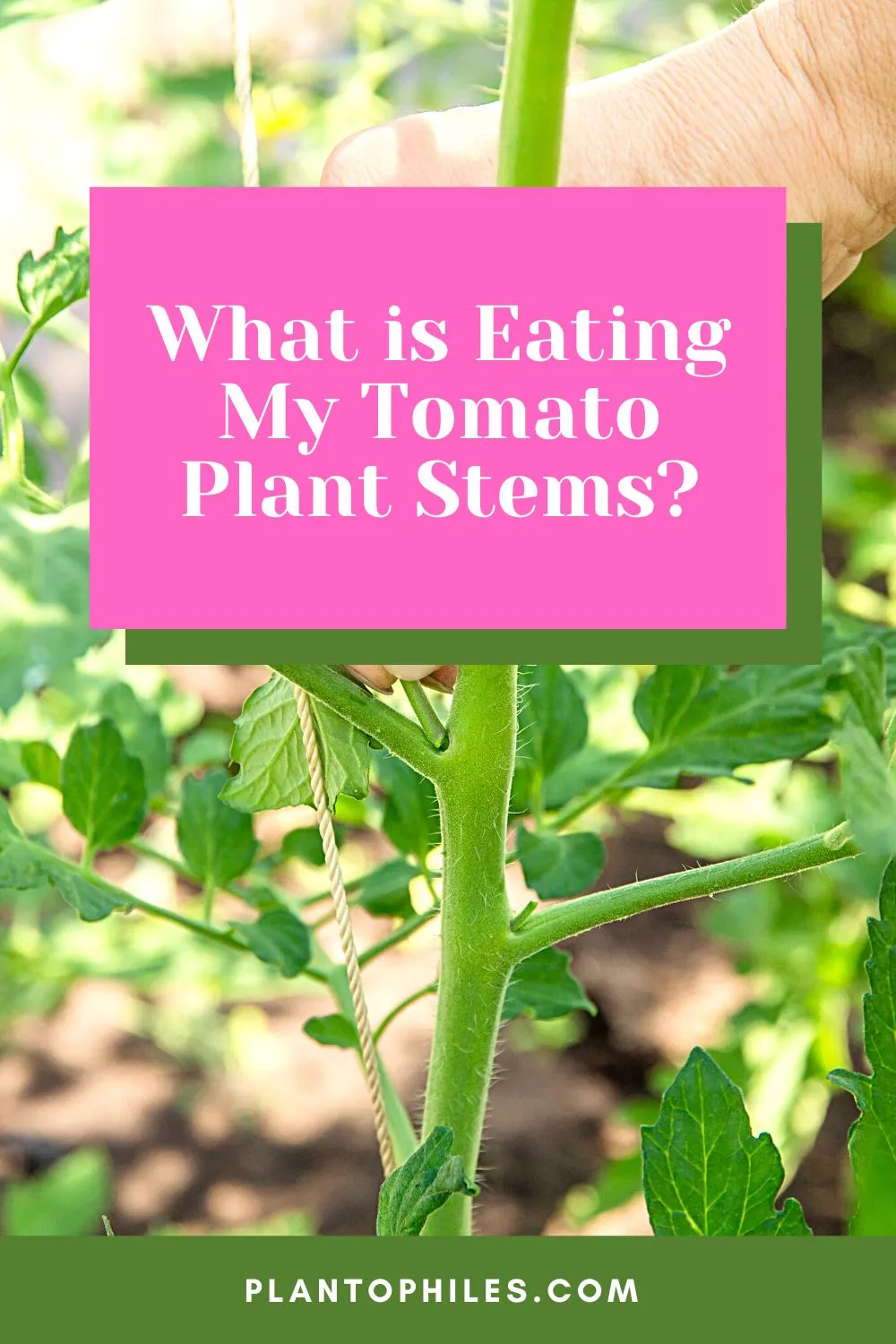
If the pests continue to eat away at the plant’s stems, the stems will eventually break, which could cause the plant to die.
It’s important to act quickly when your plant is attacked to avoid serious damage.
How to Protect My Tomato Plant From Pests
Since tomatoes are often a target for pests, it’s best to take a few precautions to keep your plants safe.
Keep a watchful eye on your plants and ensure they’re getting the nourishment they need.
Some plants, like basil, collard greens, and marigolds, can help ward off pests that attack tomatoes.
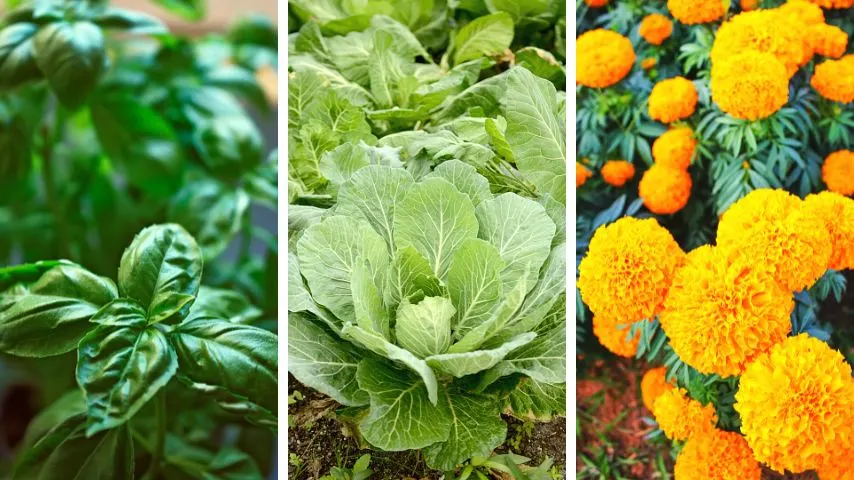
Some plants can attract insects that feed off tomato killers, such as parsley and borage.
While there are many ways to protect tomatoes, it will be easier to keep your plants safe if you know what’s attacking them.
1. Cutworms
If something’s been eating away at the stems near the base of your plant, there’s a good chance that cutworms are the culprit.
These bugs, similar to caterpillars, gnaw away at your tomato plants at night, making them tough to spot.
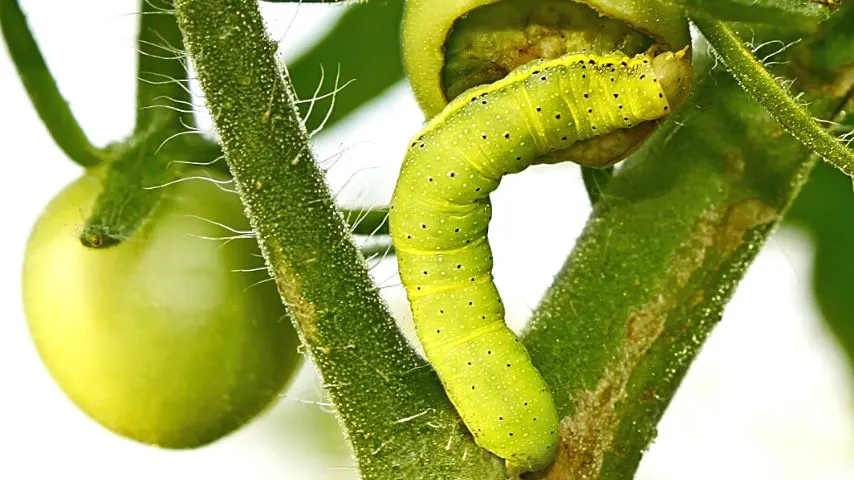
One of the easiest ways to protect your plant against cutworms is to place a cardboard tube around the base of your stem.
You can also use tomato cones and cages to shield your plant from cutworms.
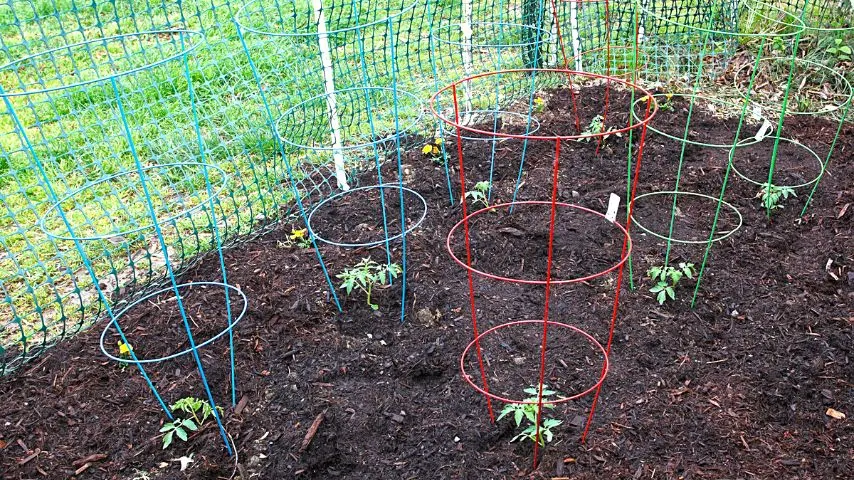
2. Tomato Hornworms
Many insects that feed off tomato plants are very small, but tomato hornworms are larger.
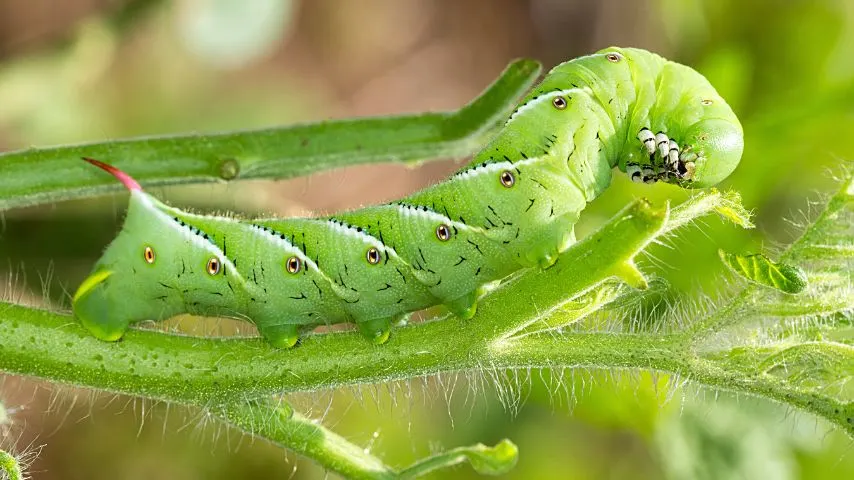
While this means they can do a lot of damage to a plant, it also makes them easier to remove.
Inspect your plants carefully to check for hornworms. If you spot any of these insects, remove them from the plant and drop them in a bucket of soapy water.
3. Click Beetle Larvae
Not only do these pests like to munch on the stems of tomato plants, but they also eat the plant’s roots.
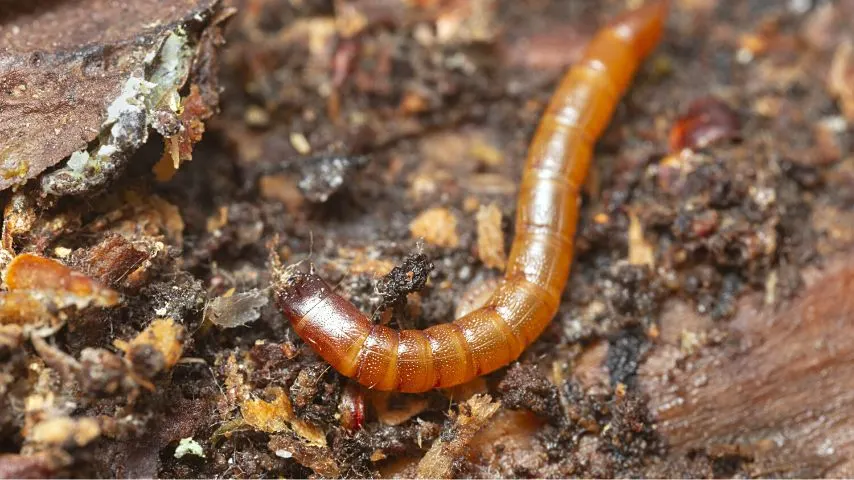
If these larvae start attacking your plant, they can cause a lot of damage quickly.
If you suspect your soil is infested by click beetle larvae, try removing about an inch of topsoil. This will expose the larvae to the elements, making them more vulnerable to nearby predators.
4. Stem Borers
Stem borers aren’t a specific type of insect. Instead, this term refers to insect larvae that like to bore into a plant’s stems.
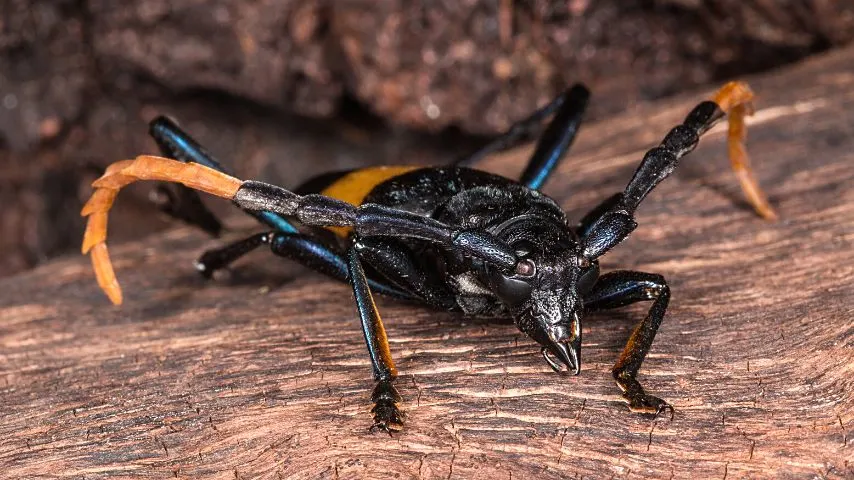
It can be difficult to remove larvae once they’ve burrowed into a plant’s stem.
It’s best to be proactive and use a cage or cone to protect your plant before anything can bore its way in.
5. Flea Beetles
Flea beetles typically attack the leaves of tomato plants rather than the stem.

However, these beetles lay eggs that can also damage your plant’s stem.
You can use row covers to protect your tomato plants against flea beetles. Before placing a row cover, remove about an inch of topsoil to eliminate any larvae living in the soil.
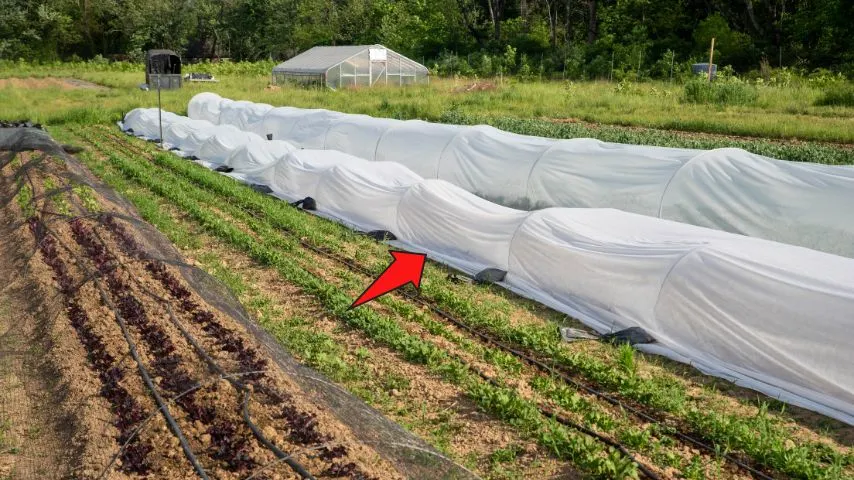
6. Other Pests
While rodents like rats and squirrels are less likely to attack your tomato plant’s stems, they could still be the source of the damage.
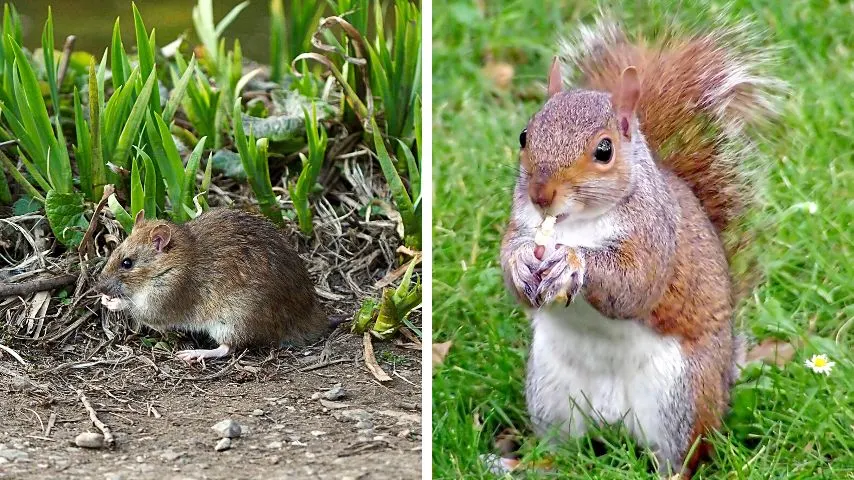
Rabbits and birds sometimes munch on the stem of your tomato plant, too.
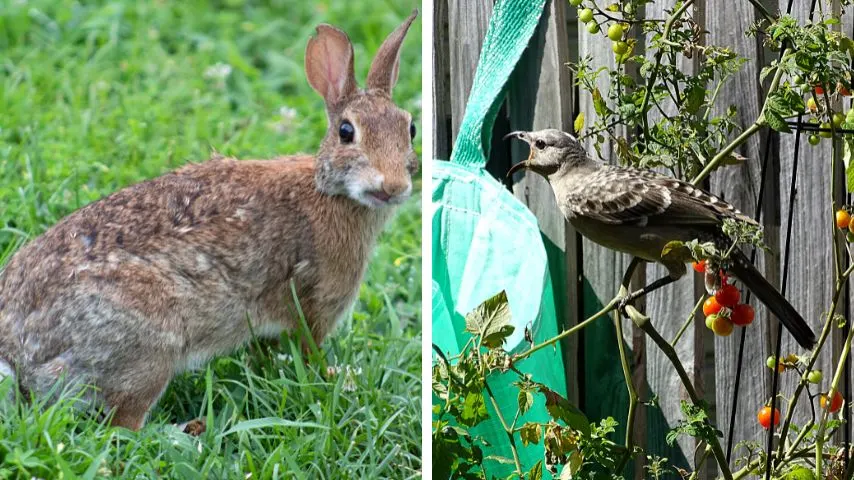
You can try to catch these pests with traps or use a cover to protect your plant. Pests with a strong sense of smell, like squirrels, can be repelled by strong odors.
What Else Damages Tomato Plant Stems
Even if there’s visible damage to the stems of your tomato plant, you’re not necessarily dealing with any pest.
If your tomato plant stems are damaged but you haven’t seen any signs of pests, something else may be causing the damage.
Strong winds can cause the stem of your tomato plant to bend, causing damage that may look like a bite.
Tall tomato plants may also start to bend, causing the step to break.
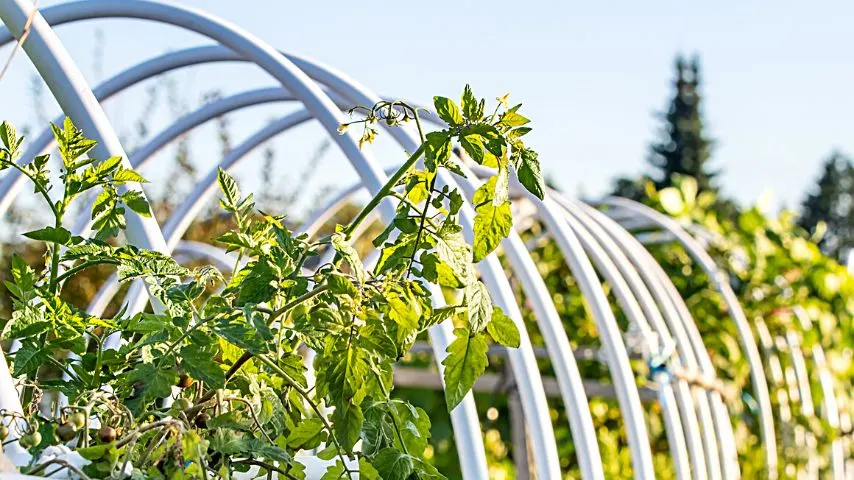
It’s best to use a cage or a trellis to support your tomato plant as it grows. If you live in an area with strong winds, you may need to place a wind cover over your plants.
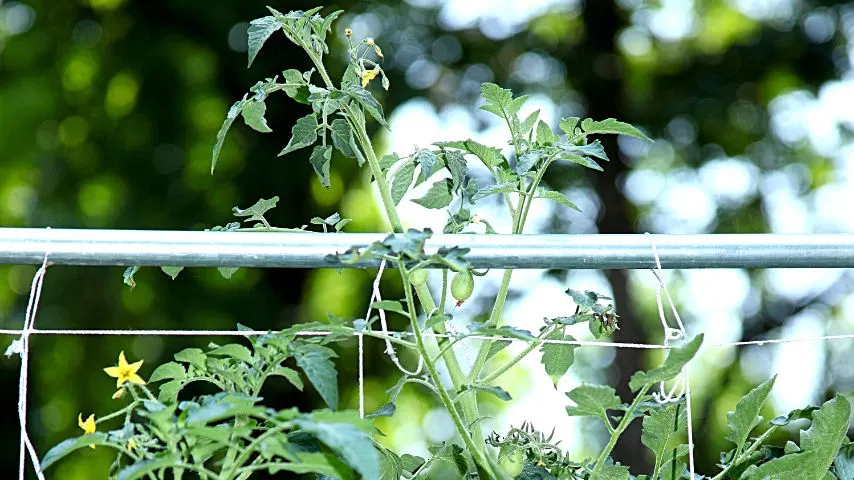
Other Ways to Protect Tomato Plants
You should work to keep your tomato plants safe from pests, but there are additional precautions you should take if you want your plants to thrive.
Since tomatoes need warm soil, you shouldn’t plant tomatoes until the 60-degree Fahrenheit soil temperature is reached.
Row covers can protect against pests, but they can also protect your plants from the cold. If temperatures drop unexpectedly, row covers could help your plants survive the temperature dip.
Tomatoes require lots of sunshine and plenty of water. To help prevent water evaporation on hot days, add a layer of mulch to the soil.
When you prune tomato plants, focus on removing leaves that shoot off from the main stem of the plant. This can help to improve air circulation around the plant.
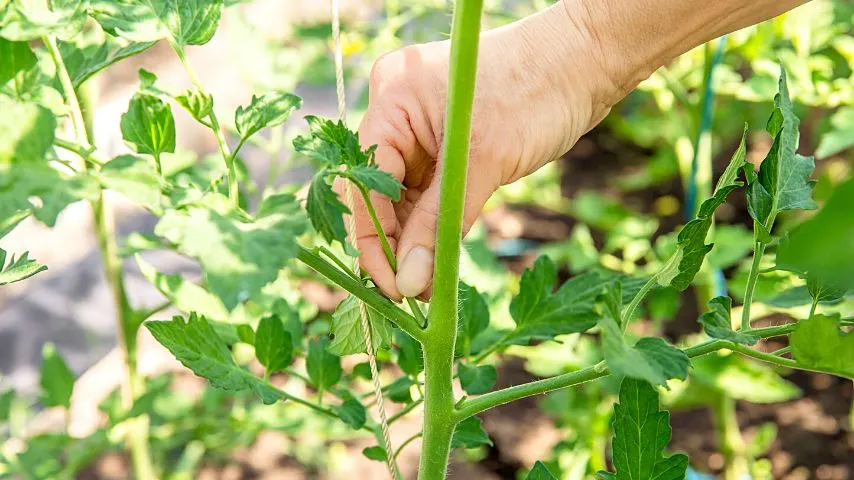
Above all else, it’s important to monitor your tomato plants regularly. The earlier you spot signs of damage like stems with bite marks, the better.
Frequently Asked Questions About What Eats On My Tomato Plant Stems
Can You Grow Tomato Plants Indoors?
Tomato plants can only grow indoors if they have the same conditions that they would have outside. While you can protect tomato plants from pests by keeping them in a greenhouse, tomatoes aren’t a great houseplant.
Why Are My Tomato Plant’s Leaves Yellowing?
If you’ve noticed your tomato plant leaves starting to yellow, likely, your plant isn’t getting enough nutrients. Tomatoes need lots of nutrients and should be fertilized regularly.
What insects eat tomato plants?
Insects eating tomato plants are cutworms, tomato hornworms, stem borers, flea beetles, and click beetle larvae.
Conclusion On What is Eating My Tomato Plant Stems
While it can be frustrating when pests attack your tomato plant, there are ways to fight against any garden pest.
Take steps to protect your plant from pests so it can produce plenty of tomatoes.

Daniel has been a plant enthusiast for over 20 years. He owns hundreds of houseplants and prepares for the chili growing seasons yearly with great anticipation. His favorite plants are plant species in the Araceae family, such as Monstera, Philodendron, and Anthurium. He also loves gardening and is growing hot peppers, tomatoes, and many more vegetables.

